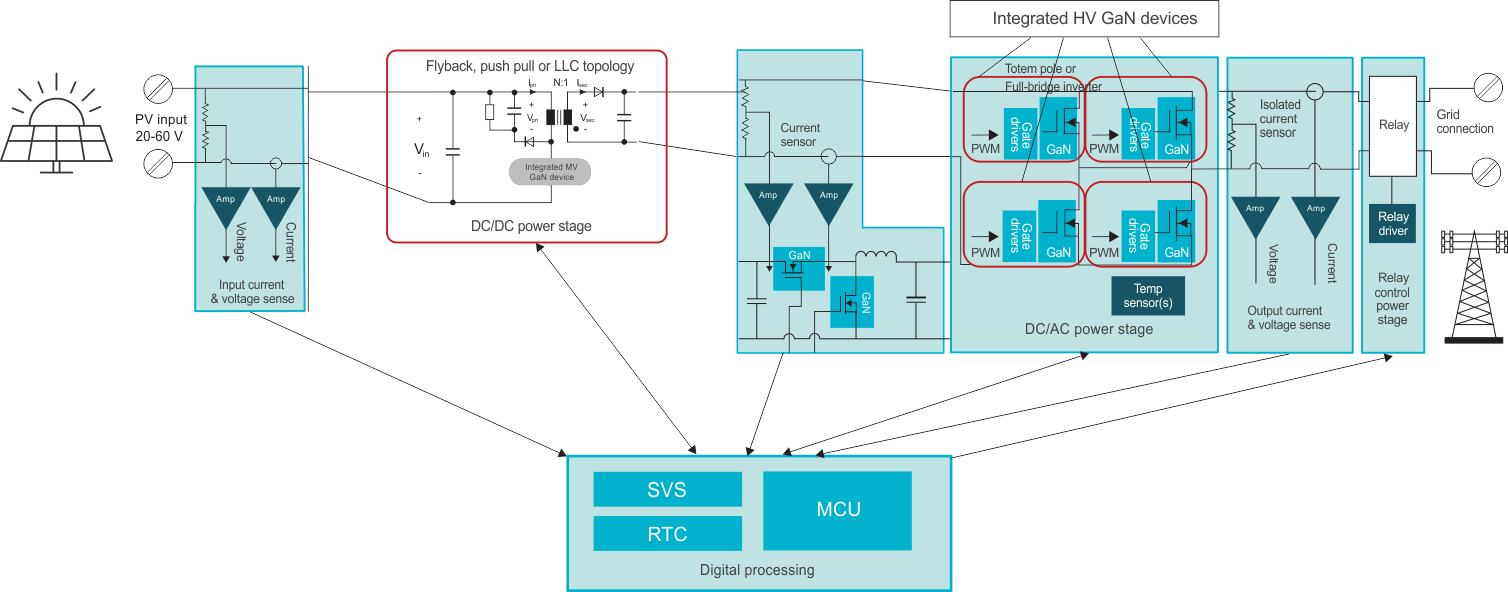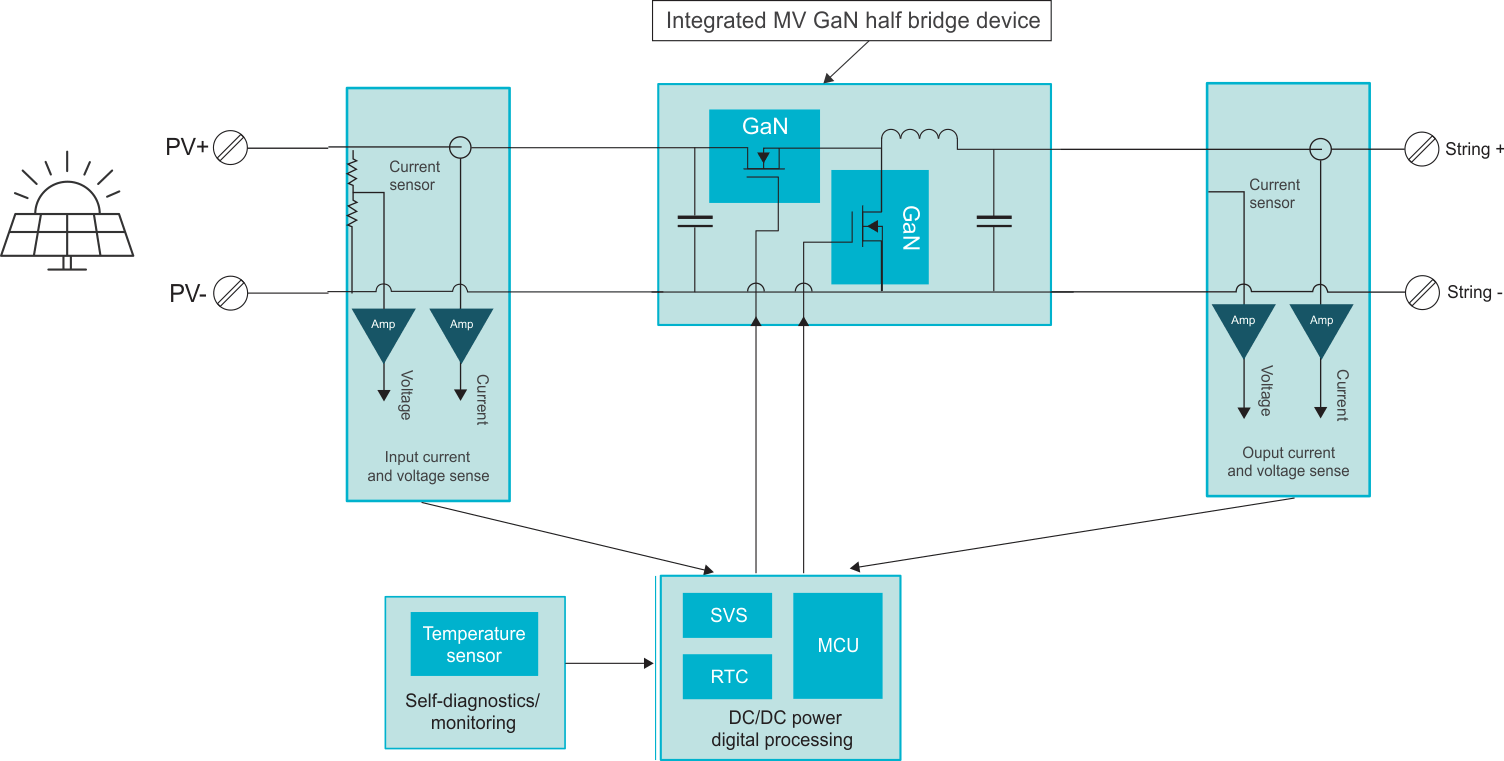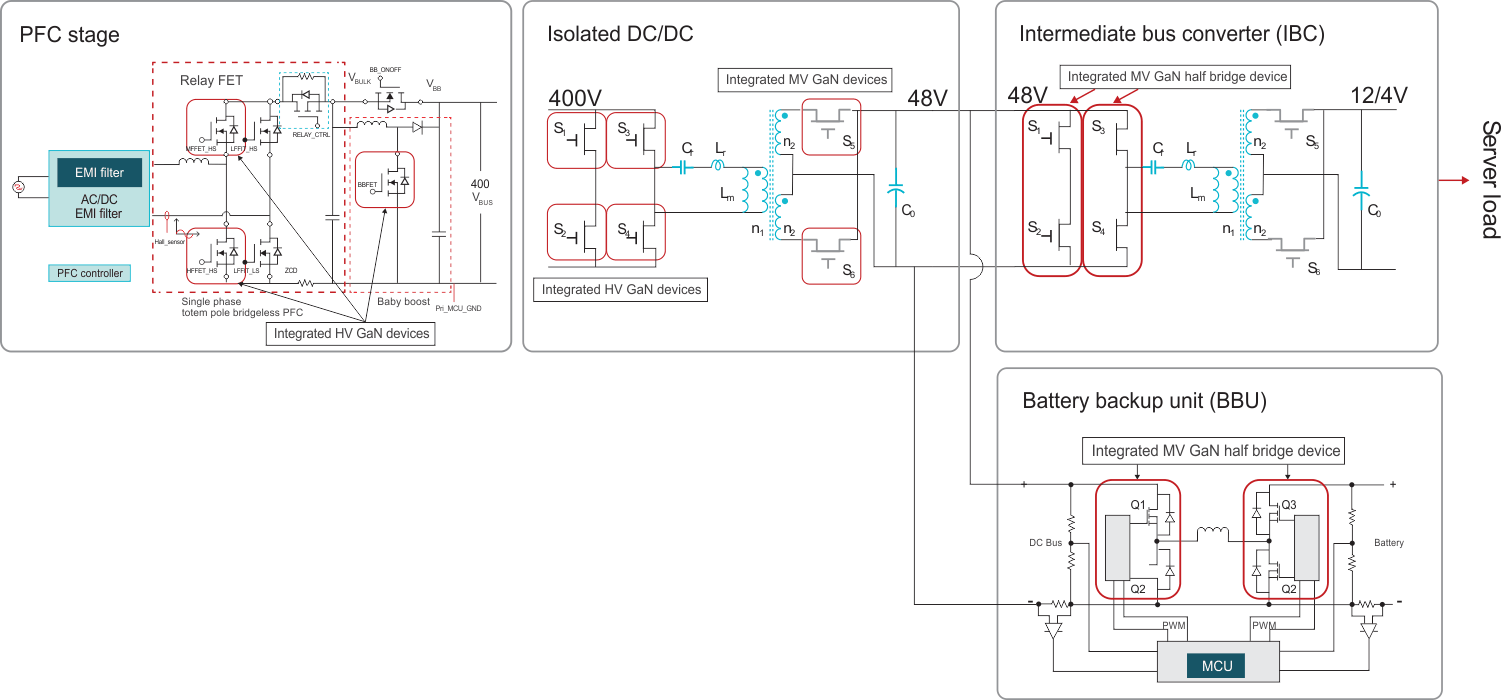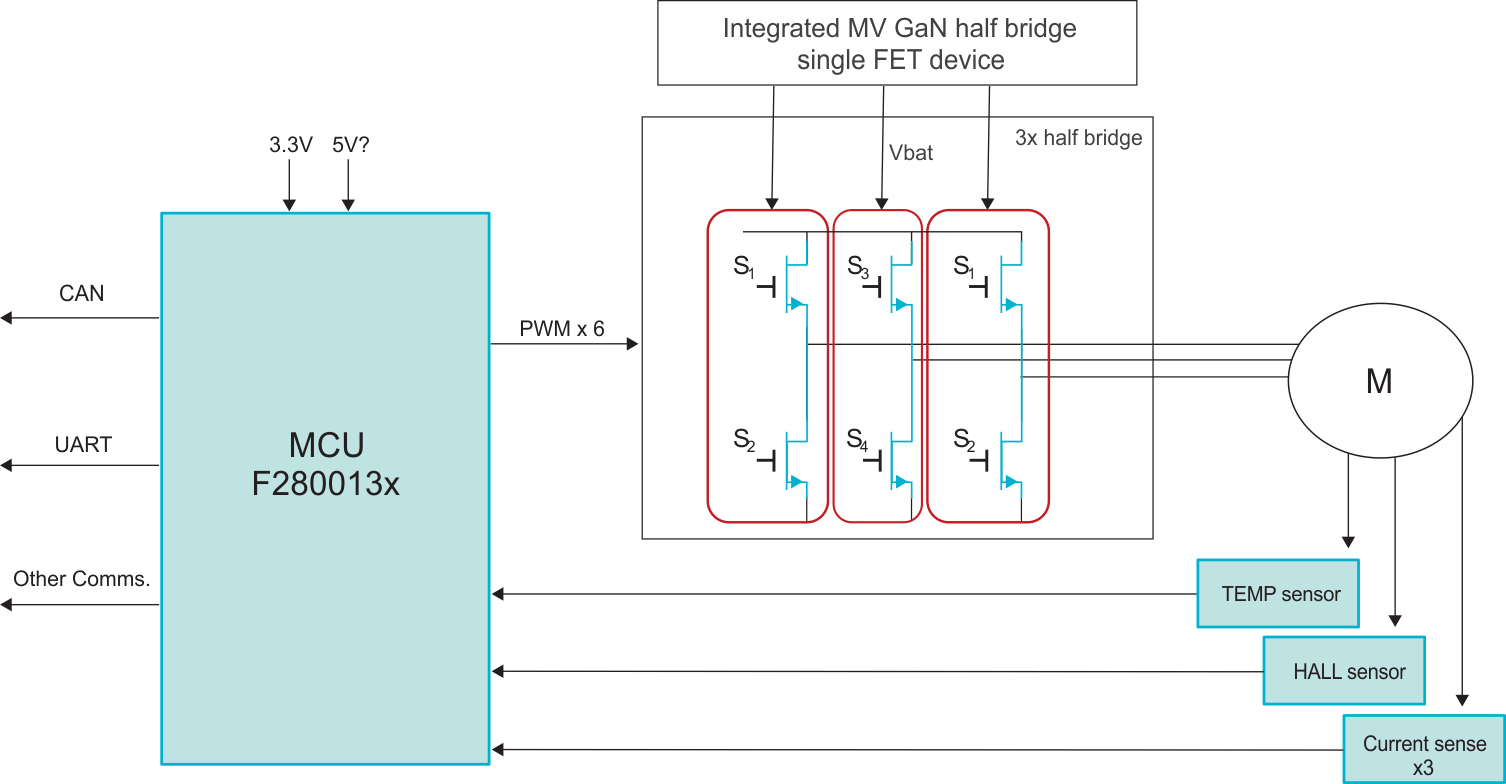SSZTD19 February 2024 LMG2100R044 , LMG3100R017
Introduction
The rapid technological expansion means that the appetite for power is increasing. In order to fuel this expansion sustainably, renewable energy sources such as solar are being deployed to power grids increasingly. Similarly, the need for servers is increasing exponentially to enable faster data processing, big data storage and artificial intelligence (AI). As a result of worldwide trends, designers have a big task at hand: keep increasing efficiency in their designs while delivering more power in the same footprint.
This challenge has already pushed the adoption of gallium nitride (GaN) in high-voltage power designs because GaN has two major advantages:
- Increased power density. GaN’s higher switching frequencies enable designers to use smaller-sized passives such as inductors and capacitors, thereby reducing board dimensions.
- Increased efficiency. Compared to silicon designs, GaN’s superior switching and conduction-loss performance reduce losses by >50%.
Alongside the industry-adopted high voltage GaN (rated >=600V), new mid-voltage GaN solutions (rated 80V-200V) are becoming increasingly popular to achieve higher power density and efficiency in power systems that high voltage GaN previously could not support.
In this article, I’ll describe four major mid-voltage application areas where the adoption of GaN is spreading.
Application No. 1: Solar energy
Solar energy is the fastest-growing source of renewable energy, rising 26% from 2021 to 2022 with a projection to expand capacity at a compound annual growth rate of approximately 11.5% in the next seven to eight years. As solar panel installations increase, so will the need for system efficiency and power density, as it is a space-intensive technology. For solar panel subsystems, the LMG2100R044 and LMG3100R017 devices can help reduce system size by over 40%.
Solar power is enabled primarily by two types of subsystems at the solar panel: a boost stage followed by an inverter stage to convert a DC voltage range to an AC voltage (see Figure 1), and a buck and boost stage in which a power optimizer converts a varying DC voltage to a common DC voltage level (using maximum power-point tracking) for delivery to a string inverter (see Figure 2).
 Figure 1 Microinverter block
diagram
Figure 1 Microinverter block
diagram Figure 2 Power optimizer block
diagram
Figure 2 Power optimizer block
diagramApplication No. 2: Servers
Given that we are still in the early stages of the artificial intelligence revolution, the demand for servers to run complicated machine learning algorithms and enable the storage of larger and more complex data sets will increase exponentially. High-density designs with an efficiency requirement of each stage of >98% will enable these enhanced processing and storage needs.
As illustrated in Figure 3, three primary systems in server power applications can employ the use of 100V to 200V GaN:
- Power-supply units (PSUs). Changes from the Open Compute Project are increasing the popularity of 48V outputs; however, the required 80V and 100V silicon solutions have significantly higher losses (gate drive and overlap losses) compared to previous solutions. GaN solutions such as the LMG3100 can help minimize these losses in the synchronous rectifier on the secondary of the inductor-inductor-capacitor stage (LLC stage).
- Intermediate bus converters (IBCs). This system converts the intermediate voltage (48V) from the output of the PSU to a lower voltage, which then goes to the server. As the 48V voltage level becomes popular, IBCs help reduce I2R losses during distribution in server subsystems and enable both size and cost reductions of bus bars and power-carrying wires. The drawback of IBCs is that they add another step to power conversion which may dent efficiency. Therefore, it is important to leverage high-efficiency GaN devices such as the LMG2100 and LMG3100, in addition to several new topologies that OEMs are testing for the best combination of high efficiency and power density.
- Battery backup units. A buck-boost stage typically converts the battery voltage (48V) to a bus voltage (48V). You can also use BBUs for battery power conversion when the mains line goes off and the power flow is bidirectional. Uninterruptible power supplies use this stage because it avoids losses caused by DC-to-AC-to-DC conversion by performing just one DC-to-DC conversion directly from the battery.
 Figure 3 Server power block
diagram
Figure 3 Server power block
diagramApplication No. 3: Telecommunications power
It is possible to make the power supply in a telecommunication radio a GaN design. Since the radio is typically set up outdoors with only natural cooling, high efficiency is important. Also, progressive generations of mobile networks (5G, 6G) call for higher networking speeds and data processing, thus requiring high-density designs with very low losses. The LMG2100 can help improve power density >40% for these types of designs.
In a typical mid-voltage application, GaN converts power from a negative battery voltage level (typically –48V) to supply power for power amplifiers at +48V using inverting buck-boost or forward converter topologies, or to supply power for field-programmable gate arrays and other DC loads using a buck converter topology.
Application No. 4: Motor drives
Yes, you can use GaN in motor-drive circuitry. The applications are diverse, and include robotics, power tool drives and two-wheeled traction inverter designs, with different load profiles. GaN’s zero reverse recovery (because there is no body diode) leads to no settling time for the current in reverse bias of the diode, which causes lower dead-time losses and better efficiency. As a result of GaN’s higher switching frequencies, there is lower current ripple, which as I mentioned earlier enables a reduction in the size of passive components, and can lead to sleeker motor-drive designs.
Figure 4 depicts how GaN can fit into motor drives.
 Figure 4 Motor-drive unit block
diagram
Figure 4 Motor-drive unit block
diagramConclusion
GaN has the potential to replace traditional silicon FETs in mid-voltage applications across the board. Other application areas for 100V to 200V GaN include general-purpose DC/DC conversion, Class-D audio amplifiers, and battery test and formation equipment. GaN also offers higher switching frequencies and lower power losses, benefits that become more pronounced with integrated power stages that simplify power designs.